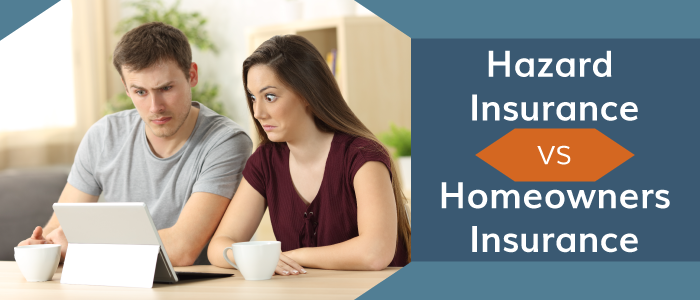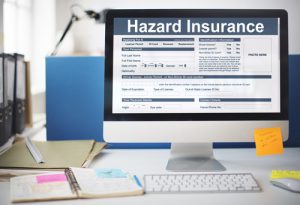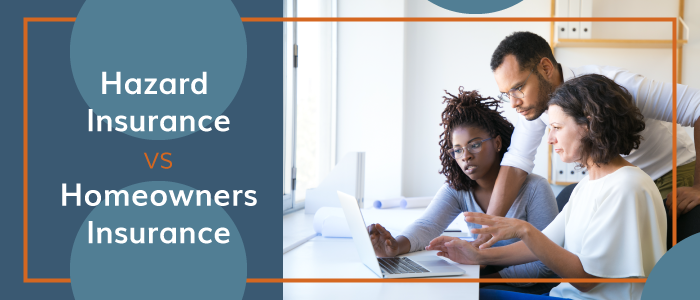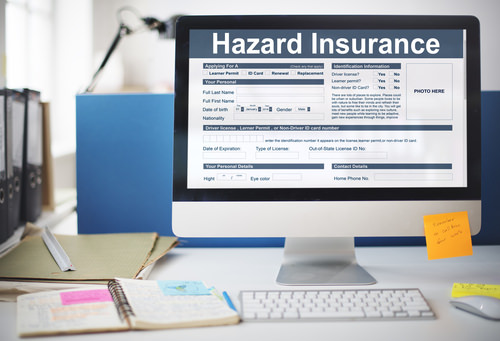Hazard Insurance And Homeowners Insurance: 7 Key Differences You Need to Know
Hazard insurance and homeowners insurance are sometimes thought of as two different types of policies.
Other times, homeowners insurance is referred to as hazard insurance, leading one to assume they’re both the same thing. However, hazard insurance is simply one part of a standard homeowners policy.

Making sense of Hazard Insurance vs Homeowners Insurance should start with a definition of each. According to the Insurance Information Institute, homeowners insurance covers the structure or house and your belongings in the event of a disaster such as a fire.
The Institute also points out that homeowners policies are usually “package policies,” covering not only damage to your property but also your liability – in other words, your legal responsibility – for injuries and property damage caused by you or members of your family to others or their property.
Hazard insurance, on the other hand, is the section of your homeowners policy that focuses only on the structure of your home.
You’re covered against the standard perils like fire and smoke, lightning, hail and windstorms, damage from vehicles and aircraft, theft, vandalism, volcanic eruption, riots, and explosions. It does not address liability, as mentioned above.
To help you better understand these distinctions, here are seven key points you need to know:
1. You cannot buy a separate hazard insurance policy
It’s generally included in your homeowners policy. You can, however, buy additional insurance for certain perils that may not be covered in the package policy, such as flooding and earthquakes.
2. Your lender requires hazard coverage

Consumerfinance.gov explains that when you obtain a mortgage, the lending institution wants to make sure your property is covered by insurance.
Since they’re giving you a loan, secured by the value of the house itself, they have an interest in maintaining the safety (and market value) of the structure, because that’s the part they’ve invested in.
This is why they require you to have insurance. It’s important to note that a regular homeowners policy with normal hazard coverage will meet that requirement.
Homeowners insurance also gives you peace of mind knowing you won’t be forced to go into debt if an emergency occurs. The coverage puts you as a homeowner in a better position to repair or rebuild your home.
3. Types of hazards covered
The Insurance Information Institute says that the hazards part of your basic homeowners policy pays to repair or rebuild your home if it is damaged or destroyed by fire, hurricane, hail, lightning or other disasters included in the policy.
Many policies will also cover structures such as a shed, garage, gazebo, swimming pool, and fences, generally for the same amount of insurance you have on the structure of the home. A standard policy, however, will not pay for damage caused by a flood, earthquake, ordinances, mold, infestation, or routine wear and tear.
If you live in a place identified by the Federal Emergency Management Agency as an area especially prone to flooding, you will be required to purchase flood insurance (in addition to your standard homeowners policy) to be in compliance with the Flood Disaster Act of 1973.
If the basic policy is not sufficient, there are also named-peril policies available that would expand your coverage to specific hazards such as the weight of snow and ice, accidental breakage or malfunction of household systems, accidental damage from artificial electrical current, overheating or freezing of household systems, and accidental water discharge.
If you want additional perils covered, a comprehensive “special form” policy would be your best choice, since it covers all property—including attached structures like a garage as well as personal belongings.
Read more:
- Reasons to Purchase Homeowners Insurance
- Does Homeowners Insurance Cover Mold? – Everything You Need to Know

4. Personal liability not included
One type of protection that hazards coverage does not include is liability. This covers you for lawsuits filed against you for bodily injury or property damage that you or family members may cause to other people.
It also covers damage caused by your pets. So, if your daughter, son, cat, or dog accidentally ruins a neighbor’s costly rug, you’ll be covered. Liability protection pays for the legal expenses of defending you in court as well as any damages awarded by the court, up to the limit stated in your policy documents.
Unlike hazards coverage, homeowners coverage generally includes no-fault medical coverage, which covers the expenses if someone is injured in your home. Medical bills would simply be submitted to your insurance company without the inconvenience of having a liability claim filed against you.
The Insurance Information Institute says many liability coverages start at around $100,000. If you own numerous assets and want more coverage than is available under a regular homeowners policy, you might want to obtain an excess liability policy, which offers broader coverage and higher liability limits.

5. Coverage with condos and homeowners associations
If you live in a condominium, you may be aware that condo or townhouse owners associations generally have blanket or master insurance policies covering common areas such as buildings and grounds, including common mechanical and structural elements.
The Veterans Administration warns that the policies maintained by some homeowner associations may not provide sufficient coverage, since they protect only the shell of the structure.
These policies, commonly referred to as “studs out” coverage, do not include damages to plumbing or electrical fixtures; interior walls; heating, ventilation and air conditioning systems; flooring; appliances; cabinets; and other items considered part of the real estate.
If the coverage is inadequate, you as a homeowner may be held responsible for purchasing coverage for anything not covered by the master policy.
6. Selecting your hazard coverage limits
The main purpose of hazard coverage is to protect yourself from financial loss. There is no one-size-fits-all formula.
The amount of hazard insurance, liability, or other coverage you will want to purchase will depend on several factors, including the limits and deductibles you choose for any particular perils.
The basic types of coverage you’ll want to consider include dwelling protection, coverage of other structures, personal belongings, additional living expenses (like living in hotels or rentals while your home is being rebuilt), and liability protection.
You’ll also need to decide whether to have cash value coverage or replacement cost coverage. The first type pays for the depreciated value of your home and any personal property that may be destroyed; the second one insures your home for the total cost to rebuild it, regardless of its market value or depreciation.
There will also be special circumstances to consider, including crime rates in your area; high risk locations like prime coastal or tourist regions (which are often subject to weather-related hazards); safety measures like security systems; higher rebuilding costs in areas of higher population density; and older, historic homes that require more maintenance and whose replacement costs exceed the actual cash value.
The best rule of thumb when determining how much coverage to get for the structure of your house is this simple principle: purchase enough to rebuild your home.
7. When your lender puts the policy in place
One other point to be aware of when arranging for homeowners insurance is the matter of “lender-placed insurance.” According to the National Association of Insurance Commissioners, this is bank or lender-purchased coverage that is substituted for the original policy.
This may happen when a homeowner defaults on insurance payments, or the lender determines that the coverage is insufficient to protect against the hazards associated with the particular property.
A lender usually attempts to verify the coverage or payment history first, prior to taking action, and then notifies the homeowner before initiating a new policy.
Lender-placed insurance is more expensive than any insurance a borrower can buy on their own and covers only the structure, not the belongings inside.



